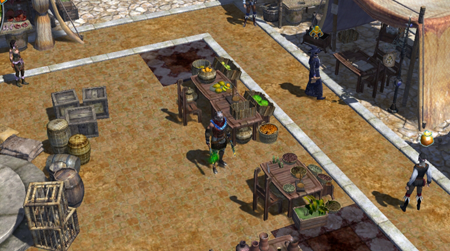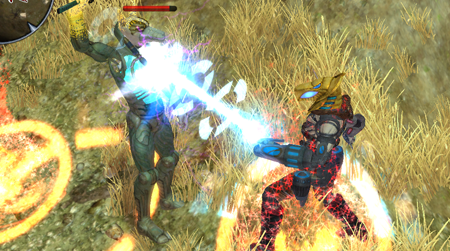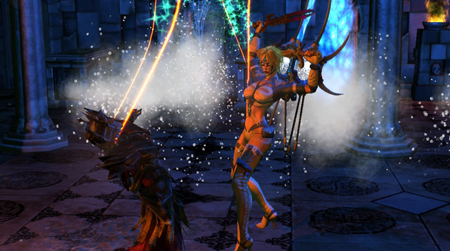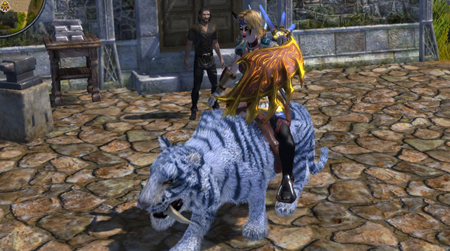Sacred 2 – PC/Xbox 360/PS3
 Review by Johnus Maximus
Review by Johnus Maximus
Banished to a world they constructed without their master’s consent, the Seraphim must try to unite the many warring factions of Ancaria. Betrayed by very races they created, civil wars are consuming the world and the abuse of magical energy is threatening its destruction.
This is the setting for Sacred 2: Fallen Angel, a vastly addictive and immense action RPG from Ascaron and published by Deep Silver, released in June and available for PC, Xbox 360 and PS3.
It’s no great surprise that swords and sorcery are the staple for any good fantasy role playing game, along with giant rats, undead armies and dragons. Sacred 2 has them by the bucket load. Reminiscent of games like Diablo or Neverwinter Nights but with a 3d perspective, it’s the sequel to a game I had never heard of, so my expectations were not massively high.
When you begin the game you have the option of six different character classes, with extremely limited customisation options. There are the Seraphim – the archetypal “heroes” of the story, High Elves – powerfully attuned to the ways of magic, Dryads – ranged weapon users at one with nature, Shadow Warriors – resurrected champions of old that excel in melee, Temple Guardians – a re-animated support class resembling Anubis, and finally the villainous Inquisitor – excelling in both magic and melee.
When creating your hero you have the option to select whether they fight for the path of virtue or evil (with the exception of the Seraphim and Inquisitor) and which of the deities watches over your character, inferring special skills that you can call upon in emergencies, ranging from blinding light that burns your foes and invulnerability to summoning a huge demon that attacks everything it sees.

A traditional marketplace, this is where you offload your loot.
Starting the game, each character has a slightly different entry point within the same region of the map, so while you may think your experience within the game would be vastly different given the history and politics of each race, in fact you are almost going to experience a like-for-like set of quest lines. The only true variation comes from your choice of light or dark side, which often sees you carry out the same quests but with a small twist (the evil path usually involves betraying or killing people).
Within a very small space of time you will get your first taste of combat experience, as the whole of Ancaria proves to be a very treacherous place to wander. There are roaming mobs of enemies who will usually attack you if you get within line of sight. At first you get simple mobs of pickpockets, kobolds and rats, which give you plenty of opportunity to try out the various weapon types and combat arts (aka magic spells) that your character can learn.
If you can hold your own against the many vicious creatures of the world you will be rewarded with two things – experience points and loot. Once you’ve grown your character, returning to places you travelled to earlier will often mean that you get mobbed by enemies too stupid to realise you can slay them in a blink of an eye. To encourage you to progress and explore the world further, these mobs start to give you less experience, until ultimately you are just killing them for no other reason than to get them out of your way.

Pew pew, lasers…
Likewise, the loot (which is probably the most vast and varied I have seen in any game) will become less vital and valuable unless you continue to advance to fighting tougher foes. Although you are not able to carry unlimited amounts of loot, the menu system is quick and easy enough to navigate quickly to the items you want to use, and if you are too far from a merchant you have the option of scrapping the item for slightly less than you would get from the merchant, meaning more time questing, less time managing inventories.
The lack of customisation options when creating your characters is made redundant by the sheer amount of available weaponry and armour, and if you happen to come across a rare and valuable piece of equipment for one of the other classes, instead of selling it you can place it into a “heroes chest”, which allows you to share items across your various saved characters.
I would heartily recommend starting up a seperate save file for each of the character types so you can see which you feel most comfortable playing as, because if you get into this game you will be in it for the long haul and you are going to want to have a toon you feel confident controlling as you venture the forests, swamps, jungles, deserts and wastelands of Ancaria.

Today’s forecast – cloudy spells with an outbreak of death
The gameplay is spread across an immense map, with many different regions that have both unique environments and enemies. Getting around on foot does at first seem slow, but it’s not long into the game when you are able to purchase a horse, then later on following a quest allows you to have a mount unique to each race, my personal favourite is the Inquisitors giant spider.
As well as riding valiantly into the sunset, you can also travel by chartering a sea vessel at various ports, or by teleportation. In some of the major areas you will find teleport arches, which when activated allow you to travel to them at any time. Also, there are hundreds of resurrection portals, which can only be activated one at a time, but allow you to return to an area in the event of your death. The teleportation serves well in the many quests where you obtain npc characters which require safe passage to somewhere.
With five levels of difficulty, a level cap of 200 and the opportunity to have four friends join you on your campaign (limited to three on 360 and PS3), this is an RPG whose campaign mode will give you an excellent cost to play-time ratio. As well as this there is the option to join a 16 player PvP game mode (again limited to four players on 360 and PS3), but from my experience this seems rather pointless given the massive PvE game world that exists.

Prince Adam of Eternia would be so jealous right now
It might sound like I’m gushing with praise about the game, but it is not without its weaknesses. On the PC version, you are going to need a pretty decent gaming rig if you want to play the game at anything other than low detail without the frame rate collapsing under its own weight. On the consoles, if you want to play with others then you best pray your internet connection can handle it, as I often experience lag when playing but with limited connection information you have no way of finding out who the bad pinger is.
If you wanted to sum up Sacred 2 in a few words it could probably be best described as the MMO that you can play by yourself. The game world is so immense you could potentially clock up hundreds of hours and still not find everything there is.
Its sense of humour is also one of its strong points, given that it adheres to so many RPG stereotypes it is nice that it doesn’t take itself too seriously, which is something German made RPG’s are often accused of (there’s even a mission where you help a heavy metal band put on a gig). The voice over work is hilariously poor, but that only serves to add to the ironic charm of Ancaria.
To close, I’m happy to say that I thoroughly enjoy Sacred 2. Initially I was only supposed to review it for the PC, but I was so enamoured I went out and bought two copies for the Xbox 360’s in my household. It ticks all the right boxes for me and I recommend it to any fans of isometric dungeon crawlers, single player RPGs or anyone who loves killing monsters and collecting loot.
Sacred 2: Fallen Angel scores four desert dragons out of five.
